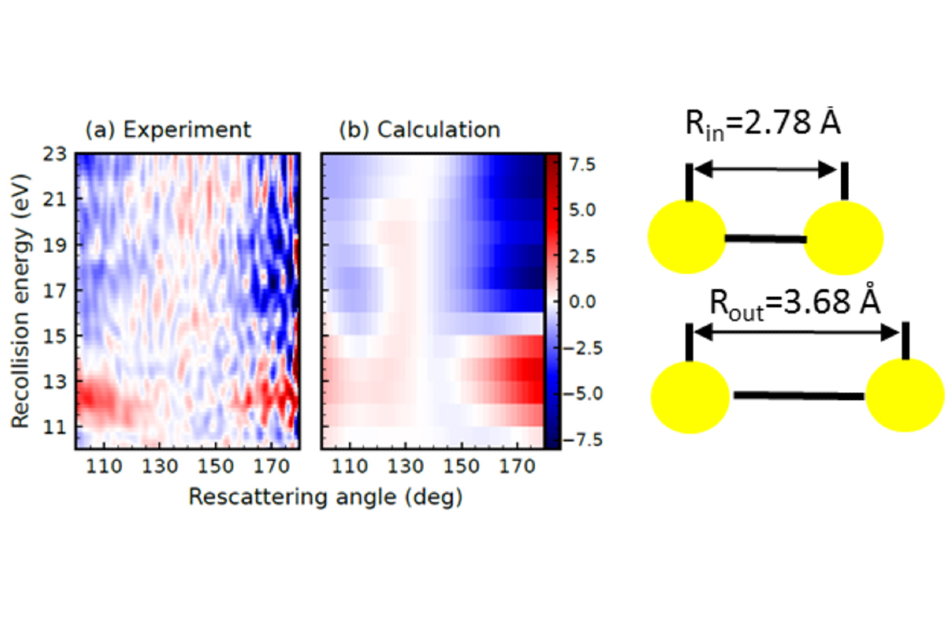Sep 18 2020
Viewing time-dependent changes in the structure of molecules are one of the long-standing objectives of research on the light-stimulated dynamics of molecules. Such molecules materialize from the absorption of light, as directly and explicitly as possible.
 Image Credit: Max Born Institute (MBI), The Forschungsverbund Berlin e.V. (FVB).
Image Credit: Max Born Institute (MBI), The Forschungsverbund Berlin e.V. (FVB).
In this context, scientists have created and applied a range of methods. Of specific potential among these methodologies are a number of techniques that were designed in the last few years. These methods depend on diffraction (of light or electrons) as a means of encoding the internuclear spacings between the atoms that collectively yield the molecule.
In a new article, scientists from the Max Born Institute (MBI), headed by Dr Arnaud Rouzée have demonstrated that high-resolution movies of molecular dynamics can be captured using electrons emitted from the molecule by a strong laser field.
After robust field ionization, the electrons that are released are usually moved quickly away from the molecule under the impact of the laser electric field. However, because of the oscillating characteristic of this field, a fraction of the electrons are pushed back to their parent molecular ion.
This phenomenon sets the stage for a supposed re-collision process, wherein the electron can be reabsorbed in the molecule (and where the absorbed energy is discharged in the form of high energy photons) or spreads the molecular ion.
Based on the electron kinetic energy, it can be briefly captured within a centrifugal potential barrier. This is a popular process in single photon ionization experiments and in electron scattering, and is called a shape resonance. The smoking gun for the manifestation of a shape resonance is a large increase of the scattering cross-section.
As its name suggests, the kinetic energy for which the shape resonance takes place is extremely sensitive to the shape of the molecular potential, and therefore to the molecular structure. Hence, shape resonances can be utilized to make a movie of a molecule that is experiencing ultrafast nuclear rearrangement.
To prove this effect, the MBI researchers recorded a movie of the ultrafast vibrational dynamics of photo-stimulated I2 molecules. A primary laser pulse, with a wavelength in the visible part of the wavelength range, was utilized to prepare a vibrational wavepacket in the electronic B-state of the molecule. This first laser pulse was trailed by a second, highly powerful, time-delayed laser pulse, with a wavelength in the infrared part of the wavelength range.
Electron momentum distributions subsequent to robust field ionization by the second laser pulse were captured at different time delays between the two laser pulses, matching to various bond distances between the two iodine atoms.
A powerful deviation of the laser-stimulated electron rescattering cross-section was noticed with delay, which could unmistakably be assigned to a change of the shape resonance energy position—as shown in the above image—triggered by the vibrational wavepacket motion.
By itself, this study presents new opportunities for exploring photo-induced molecular dynamics with high spatial and temporal resolution.
Journal Reference
Brausse, F., et al. (2020) Evolution of a Molecular Shape Resonance Along a Stretching Chemical Bond. Physical Review Letters. doi.org/10.1103/PhysRevLett.125.123001.